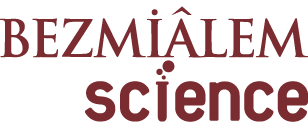ÖZET
Amaç:
Paratestiküler kitleler, tüm skrotal ve inguinal kitlelerin %2-3 gibi oldukça az bir kısmını oluşturduğundan, literatürde bildirilmiş olgular kısıtlıdır. Kliniğimizde paratestiküler kitle nedeniyle takip ve tedavisini gerçekleştirdiğimiz dokuz olguya ait deneyimlerimizi sunmayı amaçladık.
Yöntemler:
Ocak 2013-Şubat 2017 arasında, kliniğimizde paratestiküler kitle nedeniyle takip ve tedavi ettiğimiz 3-72 yaş arasındaki dokuz olgunun verilerini, postoperatif takip sürecindeki bulgularını retrospektif olarak inceledik.
Bulgular:
Yedi (%77,8) olgu skrotal kitle, şişlik yakınması ile başvururken, iki (%22,2) hasta inguinal bölgede şişlik nedeniyle başvurdu. Patolojik tanısı malign gelen tümörlerin histolojik tipleri rabdomyosarkom [(RMS), 2 olgu, %22,3)], liposarkom [(LPS), 1 olgu, %11,1)], [leiomyosarkom (LMS), 1 olgu,%11,1)] ve malign fibröz histiyostom [(MFH), 1 olgu, %11,1)] idi. Benign patolojili tümörler ise, fibroma (1 olgu, %11,1), adenomatoid tümör (1 olgu,%11,1), kistadenom (1 olgu, %11,1) ve enflamatuvar miyofibroblastik tümör (1 olgu, %11,1) olarak saptandı. Beş sarkom olgusunun medyan 23,5 (4-62) aylık takibinde nükssüz ve progresyonsuz sağkalım oranı %60 iken, genel sağkalım oranı %60 idi. Bu beş olgudan en kötü prognozlu olanlar LMS ve MFH’idi. LPS ile RMS olgularının takibinde nüks ve progresyon gözlenmezken, en iyi prognoz LPS’ye aitti. Adjuvan tedavi gereksinimi olmayan dört benign kitlenin median 49 (36-64) aylık takibinde hastalıksız sağkalım %100’dü. FNCLCC sınıflandırması’na göre derece 2 sarkomlarda lokal nükssüz sağkalım ve genel sağkalım süreleri, derece 3’e göre anlamlı olarak daha fazla saptandı (p=0,039).
Sonuç:
Benign paratestiküler kitleleri, sarkomlardan klinik olarak ayırt etmek zordur. Paratestiküler sarkomlarda histolojik alt tipler içerisinde LPS daha iyi prognoza sahiptir. Yüksek dereceli sarkomların prognozu daha kötüdür. Adjuvan tedaviler eklenmezse, kısa sürede lokal nüks veya progresyon gözlenebilmektedir.



